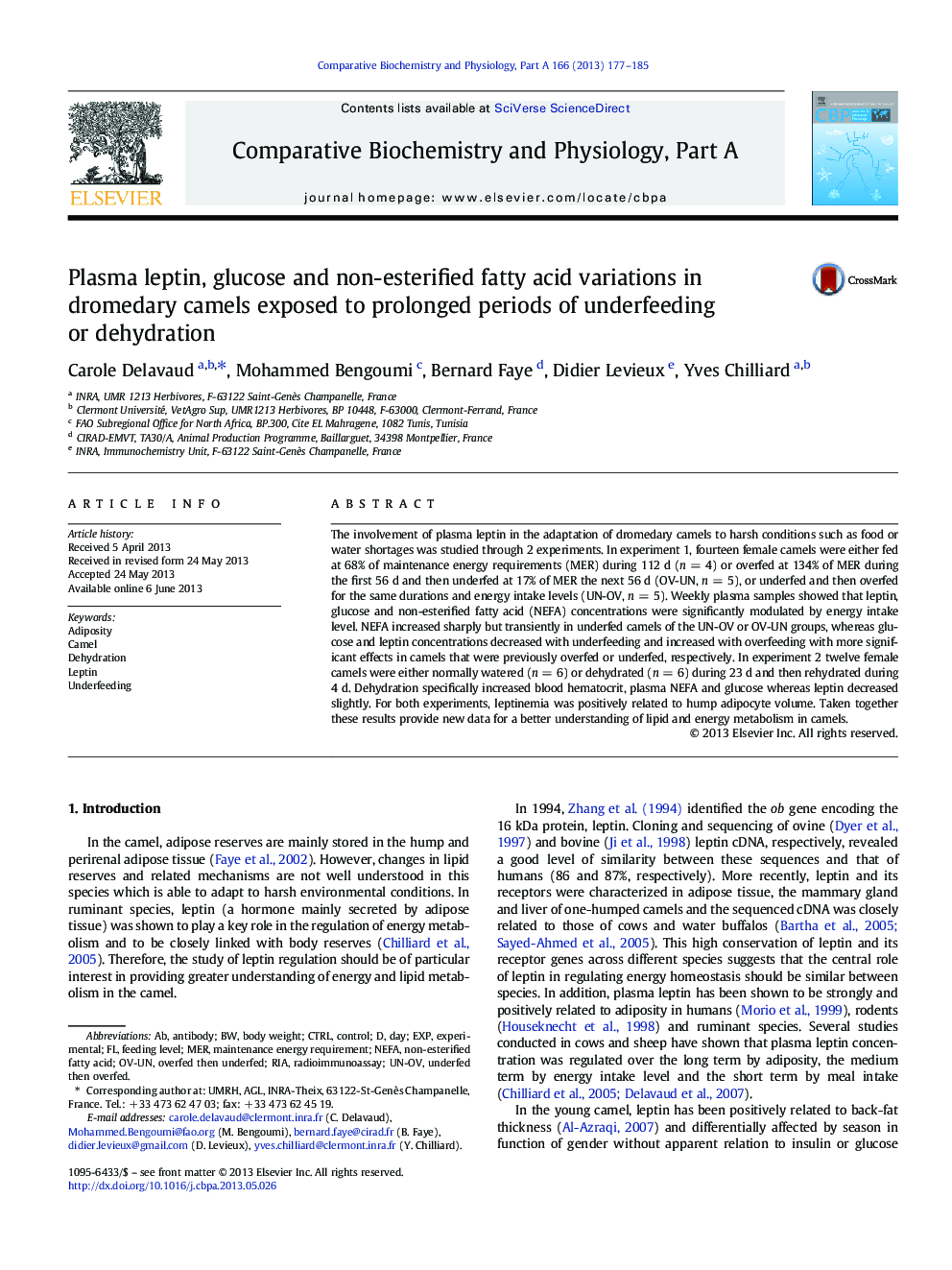| Article ID | Journal | Published Year | Pages | File Type |
|---|---|---|---|---|
| 10818892 | Comparative Biochemistry and Physiology Part A: Molecular & Integrative Physiology | 2013 | 9 Pages |
Abstract
The involvement of plasma leptin in the adaptation of dromedary camels to harsh conditions such as food or water shortages was studied through 2 experiments. In experiment 1, fourteen female camels were either fed at 68% of maintenance energy requirements (MER) during 112 d (n = 4) or overfed at 134% of MER during the first 56 d and then underfed at 17% of MER the next 56 d (OV-UN, n = 5), or underfed and then overfed for the same durations and energy intake levels (UN-OV, n = 5). Weekly plasma samples showed that leptin, glucose and non-esterified fatty acid (NEFA) concentrations were significantly modulated by energy intake level. NEFA increased sharply but transiently in underfed camels of the UN-OV or OV-UN groups, whereas glucose and leptin concentrations decreased with underfeeding and increased with overfeeding with more significant effects in camels that were previously overfed or underfed, respectively. In experiment 2 twelve female camels were either normally watered (n = 6) or dehydrated (n = 6) during 23 d and then rehydrated during 4 d. Dehydration specifically increased blood hematocrit, plasma NEFA and glucose whereas leptin decreased slightly. For both experiments, leptinemia was positively related to hump adipocyte volume. Taken together these results provide new data for a better understanding of lipid and energy metabolism in camels.
Keywords
Related Topics
Life Sciences
Biochemistry, Genetics and Molecular Biology
Biochemistry
Authors
Carole Delavaud, Mohammed Bengoumi, Bernard Faye, Didier Levieux, Yves Chilliard,
